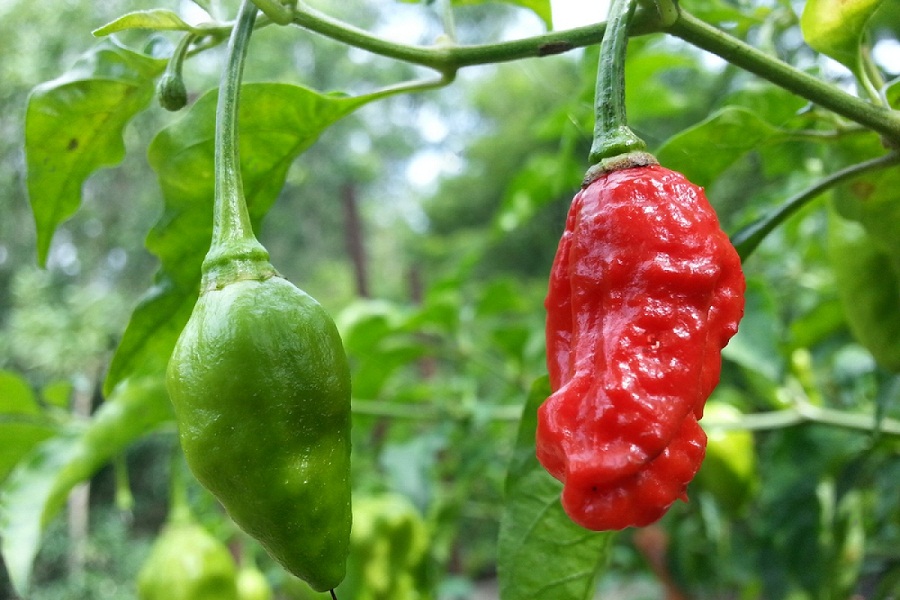
Published :
Updated :

The Naga Chilli, also called Bhut Jolokia (the Ghost Chilli), is one of the hottest chillies in the world and the only naturally occurring chilli pepper with a heat level that ranges from 1 million to 1.5 million Scoville Heat Units (SHU) on the Scoville Scale.
The pungency levels of these chillies are more than 50% higher than those of the previous record holder.
However, it wasn't until the 21st century that this was discovered. It is grown in Bangladesh and North East India, specifically in Nagaland, Manipur, Meghalaya, and Assam. The variations are most likely components of the same traditional variety that has been growing in this area for years, even though they go by different names and have origins in other nations.
The Bangladeshi version, known as Naga Morich, is a staple among Bangladeshis living in Britain, and its popularity is steadily growing among those who like their food extremely pungent.
The capsaicinoids chemical family is what gives chillies their pungent flavour. The more concentrated these compounds are, the more potent the chilli will be because they are not present elsewhere in the plant. The Scoville Heat Unit is a unique unit of measurement used to express the concentration of capsaicinoids. (SHU).
According to many, Gerald Fowler, a chilli farmer at the Chilli Pepper Company in Cark, Cumbria, invented the Naga Viper in England. The Naga Viper pepper is thought to be an unstable three-way hybrid made from the Naga Morich, Bhut jolokia, and the Trinidad scorpion.
On July 28, 2021, a shipment of Naga chillies from Nagaland was flown for the first time from Guwahati to London. It came from Tening, a part of the Peren district in Nagaland. It was packed at a packhouse in Guwahati with assistance from APEDA (the Agricultural and Processed Food Products Export Development Authority). APEDA is a government agency that promotes exports and trade in India and is the premier body for the export promotion of fresh vegetables and fruits.
Naga Morich was the first product from Nagaland to be registered with Geographical Indications (GI). APEDA, in collaboration with the Nagaland State Agricultural Marketing Board (NSAMB), coordinated the first export consignment of fresh Naga chilli.
Naga Morich is being commercially cultivated in Moulvibazar and Sylhet. Local farmers are making money as the demand for this severely spicy chilli grows worldwide each year. Many exporting companies in Bangladesh, like Taimur Jahan Trading Corporation and Evergreen Transparency Ltd., export Naga Morich outside the country every year.
Finding the world's hottest chilli is a quest that borders on obsession for those seeking the ultimate culinary high. The Naga Morich chilli is extremely hot but has a unique flavour and a distinctive aroma. It offers an intensely fruity, almost floral, flavour.
Fresh green Naga chillies are used to add a spicy flavour to meals. On local streets, Naga pepper is employed by pinching in various fast foods such as puffed rice, Chanachur, and Phuchka. Sometimes, they use their fingers to break a piece off, and it is mixed with cooked rice and any additional dishes on the plate.
But they tend to adapt well to most of the world's cuisines. It is often dried and made into chilli flakes. It is also made into hot sauce and used to season various foods.
Naga chillies are popular among British Bangladeshis. It is grown in the London area and Dorset, but the majority of it is imported through a supply chain that includes fruit flown in from Bangladesh. The popularity of the Naga chilli is growing every day, not just in England but all over the world.
asmaulhusnapushon@gmail.com


 For all latest news, follow The Financial Express Google News channel.
For all latest news, follow The Financial Express Google News channel.